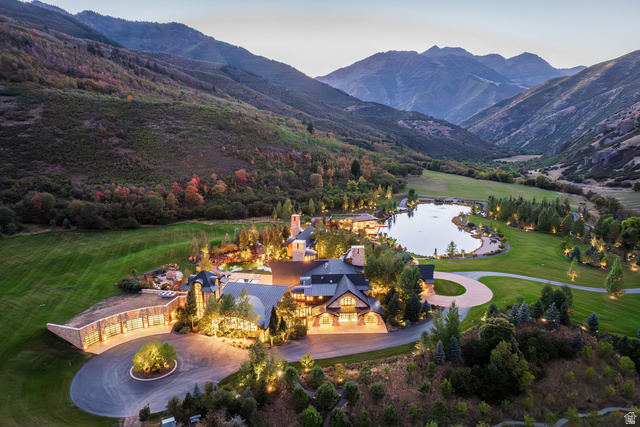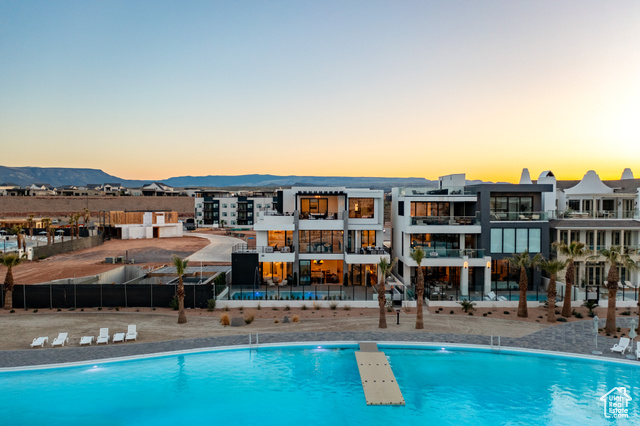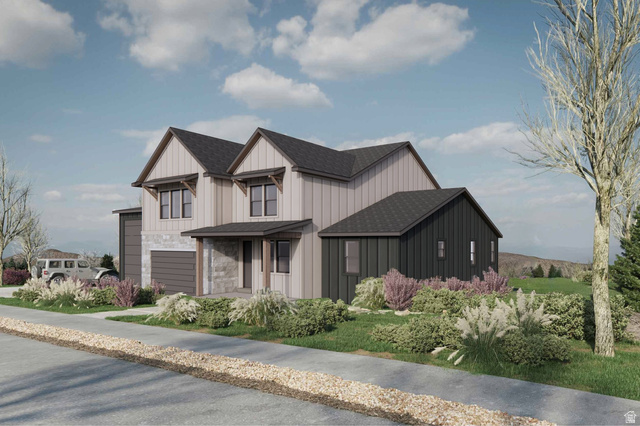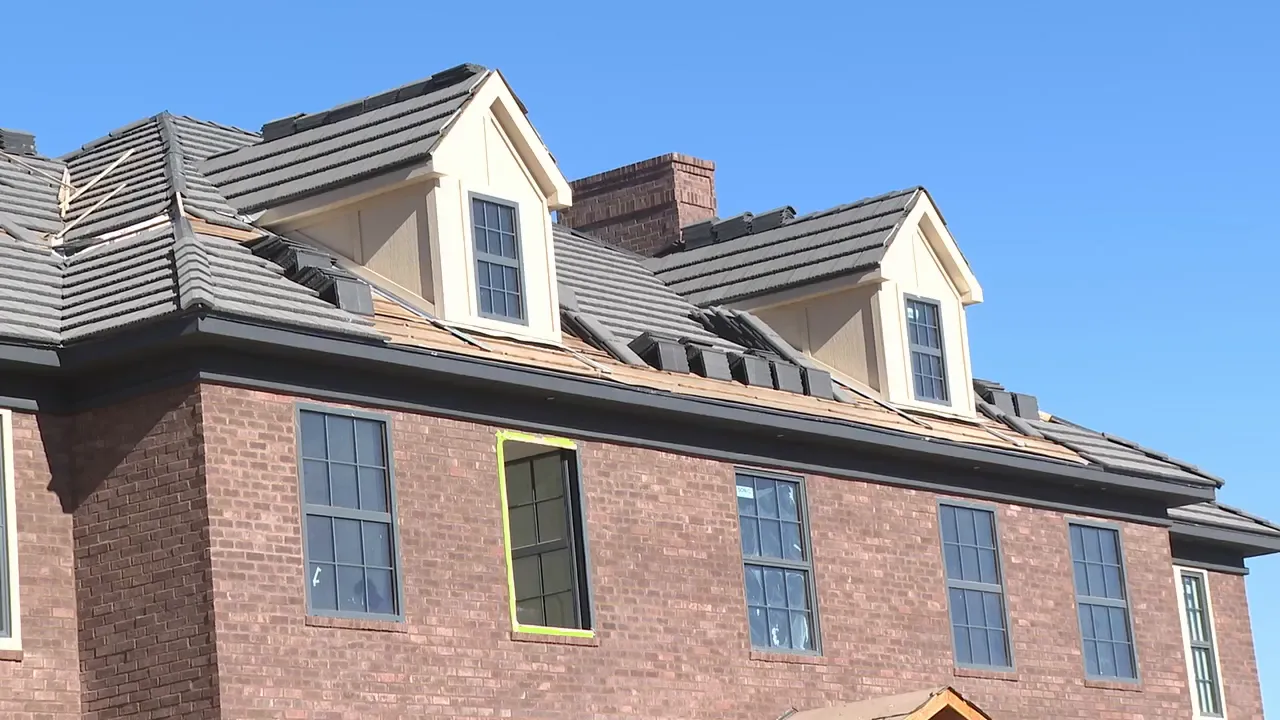
If you're considering relocating to St. George, Utah, understanding the climate is crucial, especially the heat during the summer months. This blog will explore the temperature variations throughout the year, providing insights into what you can expect when navigating the Utah real estate market.
Related Articles:
St George Utah Winter Weather
St George Utah Fall Weather
Introduction to St. George's Climate
St. George, Utah, is known for its warm climate, especially during the summer months. Temperatures can soar above 100 degrees Fahrenheit, making it essential for potential residents to prepare for the heat. Understanding this climate is vital for anyone considering Utah real estate.
Monthly Temperature Breakdown
Understanding the temperature variations in St. George, Utah, is essential, especially for those considering a move to this beautiful area. The climate is characterized by hot summers and mild winters, making it unique compared to other parts of Utah. Here’s a month-by-month breakdown of what you can expect.
January to March: The Cool Season
In January, St. George experiences cooler temperatures, with highs averaging around 52 degrees Fahrenheit and lows dipping to about 31 degrees. This is the coldest month, requiring warmer clothing for outdoor activities. As February arrives, temperatures start to rise slightly, reaching an average high of 62 degrees. By March, you can anticipate highs of around 72 degrees, signaling the transition into spring.
April to May: Warming Up
April marks a notable change in weather, with average highs climbing to 80 degrees. This month is perfect for outdoor adventures, as the temperatures are warm yet comfortable. May continues this trend, with daytime highs averaging 88 degrees and nighttime lows around 57 degrees. The pleasant weather in May makes it one of the best times to visit St. George.
June: The Heat Begins
As we enter June, temperatures soar, with average highs reaching 99 degrees. Nights are still warm, averaging around 66 degrees. This month marks the beginning of the hot season, prompting many residents to seek shade or air conditioning during the day. It’s important to stay hydrated and plan outdoor activities for the cooler parts of the day.
July: The Hottest Month
July is known as the hottest month in St. George, with average daytime temperatures hitting a scorching 104 degrees. Nighttime temperatures remain warm, averaging around 74 degrees. While there may be occasional cooler days, many will experience temperatures pushing close to 110 degrees. Residents often adapt by staying indoors during peak heat hours.
August: Continuing the Heat
August follows closely behind July, with average highs of 102 degrees and lows around 72 degrees. The intense heat can be challenging, but many find ways to enjoy the outdoors, particularly early in the morning or later in the evening. As summer draws to a close, the heat remains a defining characteristic of life in St. George.
September to November: Cooling Down
September marks the beginning of a gradual cooling trend. Average highs drop to 95 degrees, making it a more comfortable month for outdoor activities. By October, temperatures continue to decrease, averaging around 82 degrees during the day. November brings even cooler weather, with highs around 67 degrees, indicating the approach of winter.
December: Welcoming Winter
December brings the coldest temperatures of the year, with daytime highs averaging 53 degrees and nighttime lows around 31 degrees. While it may not snow in St. George, the cooler weather still requires warm clothing, especially during the evenings. This month offers a stark contrast to the summer heat, showcasing the diverse climate of St. George, Utah.
Understanding these monthly temperature variations is crucial for anyone considering Utah real estate. Whether you're looking to enjoy the warm summers or the mild winters, St. George offers a unique climate that appeals to many. Prepare accordingly to make the most of your experience in this beautiful region.
Summer Heat: The Hottest Months
The summer months in St. George, Utah, are known for their intense heat. From June to August, the temperatures can be extreme, making it essential for residents and visitors to prepare. In June, expect average highs around 99 degrees Fahrenheit, with nighttime lows still warm at about 66 degrees. As July arrives, temperatures peak, averaging a scorching 104 degrees during the day. Nighttime offers little relief, with lows around 74 degrees.
Explore Utah Real Estate

5618 E SOUTH FORK RD, Provo, UT
$43,000,000
Bedrooms: 6 Bathrooms: 10 Square feet: 22,958 sqft

864 W SAPPHIRE SKY LN #546, St George, UT
$4,300,000
Bedrooms: 7 Bathrooms: 9 Square feet: 5,136 sqft

1700 W 2700 N #36, Pleasant View, UT
$230,000
Bedrooms: 4 Bathrooms: 2 Square feet: 2,100 sqft
Living with the Heat
While July is the hottest month, August continues the trend with average highs of 102 degrees. The heat can be challenging, especially during peak hours. Many locals plan their activities around the cooler parts of the day, opting for early mornings or late evenings for outdoor fun. It’s important to stay hydrated and seek shade whenever possible.
Adapting to Summer Life
Residents often find ways to enjoy the summer despite the heat. Swimming pools become a popular refuge, and many homes are equipped with air conditioning to combat the warmth. If you're considering Utah real estate, understanding the summer climate is crucial. Embrace the heat and prepare for a unique lifestyle in St. George!
Year-Round Weather Patterns
St. George, Utah, experiences diverse weather patterns throughout the year, making it a unique place to live. The climate is characterized by hot summers and mild winters. This year-round weather can significantly influence your lifestyle and decisions, especially if you are considering Utah real estate. Understanding these patterns helps you prepare for each season, whether it’s the scorching summer heat or the cooler winter months.
Summer Season: Intense Heat
From June to September, temperatures can reach extreme highs, with July being the hottest month. Average daytime temperatures in July hover around 104 degrees Fahrenheit. Even at night, lows remain warm, averaging around 74 degrees. This intense heat means that outdoor activities are best planned for the cooler mornings or evenings. Staying hydrated and finding shade are crucial during this period.
Fall Transition: Cooling Off
As summer ends, St. George begins to cool down gradually. September still sees high temperatures, around 95 degrees, but by October, the average daytime highs decrease to 82 degrees. November brings even cooler weather, with highs around 67 degrees. This transition is a welcome relief for many residents, allowing for more outdoor activities without the oppressive heat.
Winter Months: Mild Yet Chilly
Winter in St. George lasts from late November to February. January is the coldest month, with daytime highs averaging 52 degrees and lows around 31 degrees. Although it rarely snows, the cooler temperatures require warm clothing, especially in the mornings and evenings. This is a stark contrast to the intense summer heat, showcasing the area’s climate diversity.
Spring Awakening: Warming Up
Spring arrives in March, bringing mild temperatures and a gradual warm-up. By April, average highs climb to 80 degrees, making it an ideal time for outdoor adventures. May sees temperatures reach a comfortable 88 degrees during the day, with pleasant evenings. This season is often considered one of the best times to explore the natural beauty of St. George.
Understanding St. George's year-round weather patterns is essential for anyone considering a move to this vibrant area. Whether you are drawn to the hot summers or the mild winters, being prepared will help you enjoy everything this beautiful region has to offer.
Precipitation and Sunshine in St. George
St. George, Utah, is characterized by its dry climate, with low precipitation levels throughout the year. On average, the region experiences only about three to four days of rain during the winter months, and just one to two days during the summer. This lack of rainfall contributes to the desert-like conditions, making it essential for residents to plan for minimal water availability.
Sunny Days
One of the most appealing aspects of living in St. George is the abundance of sunny days. The area enjoys a high number of clear, sunny days each year, which is ideal for outdoor activities. With a beach pool score reflecting this sunny disposition, residents can take advantage of the beautiful weather to explore the stunning natural surroundings.
More Properties You Might Like

La Casa Cir, St George, UT
$575,500
Square feet: 14,391 sqft

850 LAZY WAY #8, Francis, UT
$1,300,000
Bedrooms: 4 Bathrooms: 4 Square feet: 2,755 sqft

2098 E GOOSE RANCH RD, Vernal, UT
$103,000
Square feet: 274,864 sqft
Summers in St. George
The hot season lasts for approximately three and a half months, from early June to mid-September, with average daily highs exceeding 92 degrees Fahrenheit. July is typically the hottest month, averaging around 104 degrees during the day. As the sun sets, temperatures remain warm, often staying above 70 degrees at night, leading to a continuous warm environment.
Understanding the precipitation and sunshine patterns is crucial for anyone considering Utah real estate. Whether you’re drawn to the sun-soaked days or the dry climate, being prepared will enhance your experience in this vibrant region.
Living in St. George: Tips for the Summer
Summer in St. George, Utah, can be intense, with temperatures often reaching over 100 degrees Fahrenheit. To enjoy this beautiful area while staying safe, it’s essential to adapt to the heat. Here are some tips to help you make the most of your summer experience in St. George.
Stay Hydrated
Staying hydrated is crucial during the hot summer months. Always carry a water bottle and aim to drink at least eight glasses of water a day. If you're planning outdoor activities, increase your water intake to compensate for the sweat loss. Dehydration can sneak up on you, so be mindful of your body's signals.
Plan Outdoor Activities Wisely
To avoid the peak heat, schedule outdoor activities for the early morning or late evening. During the day, temperatures can soar, making it uncomfortable and potentially dangerous to be outside. Consider hiking, biking, or visiting local parks during cooler times, allowing you to enjoy the stunning scenery without the scorching heat.
Utilize Shade and Air Conditioning
Take advantage of shaded areas when outside. Whether it’s a tree, patio, or umbrella, shade can make a significant difference in comfort. At home, ensure your air conditioning is in top shape. Many homes in St. George come equipped with AC, which is essential for surviving the summer heat. If you're considering Utah real estate, look for properties with adequate cooling systems.
Embrace Water Activities
Summer is the perfect time for water activities. Swimming pools, lakes, and rivers provide great ways to cool off. Many residents enjoy spending afternoons at community pools or taking short trips to nearby water bodies. If you have access to a pool, it can be your personal oasis during the hottest days.
Stay Informed
Keep an eye on weather forecasts to stay informed about temperature changes and heat advisories. Local news or weather apps can provide updates and safety tips, but you can also utilize apps that use data from the best weather API sources to give accurate, real-time updates. Being aware of the heat index can help you plan your day and avoid strenuous activities during the hottest hours.
Living in St. George during the summer can be enjoyable if you take proper precautions. By staying hydrated, planning your activities wisely, and embracing the local lifestyle, you can thrive in this beautiful desert oasis.
Related Articles:














